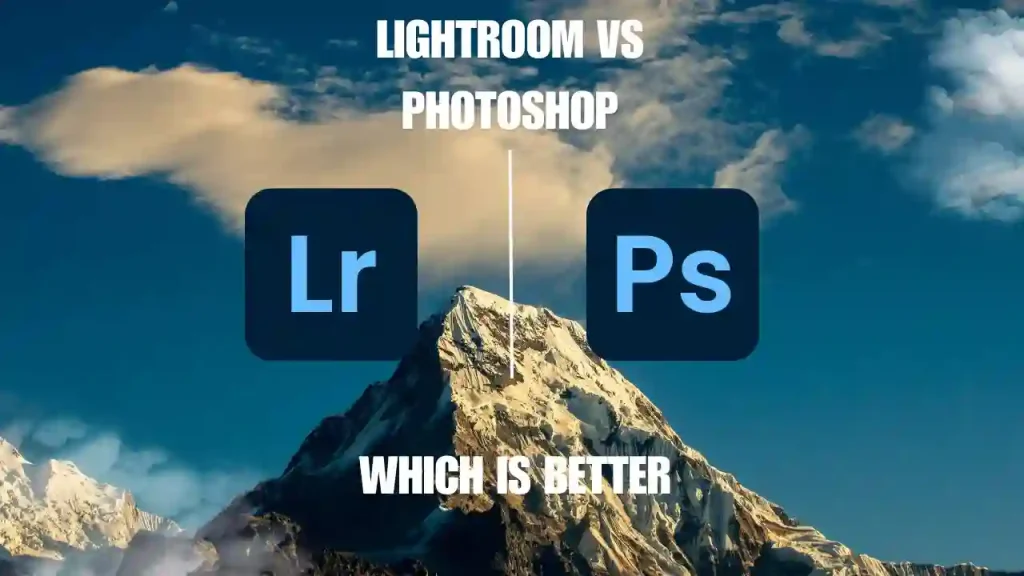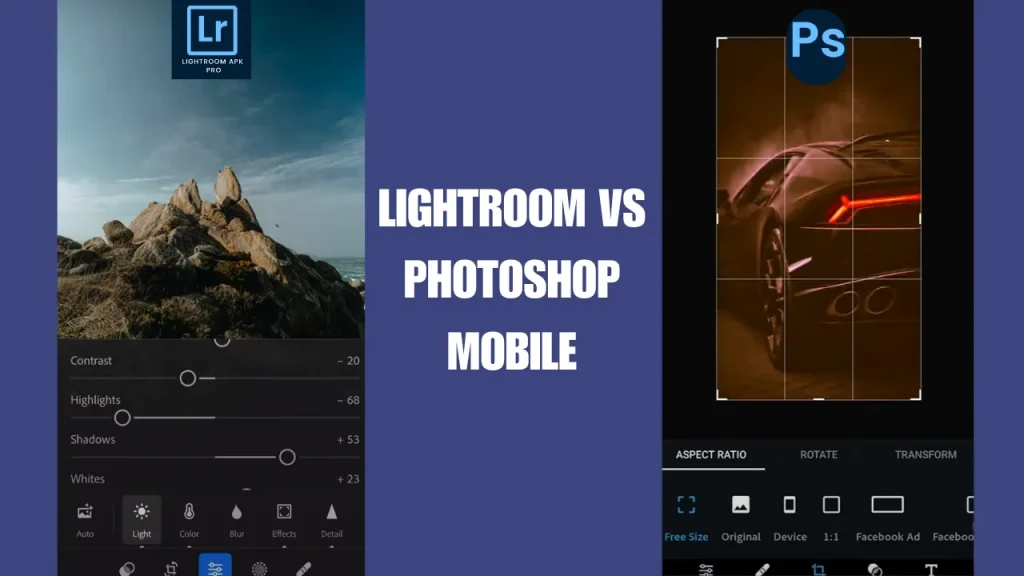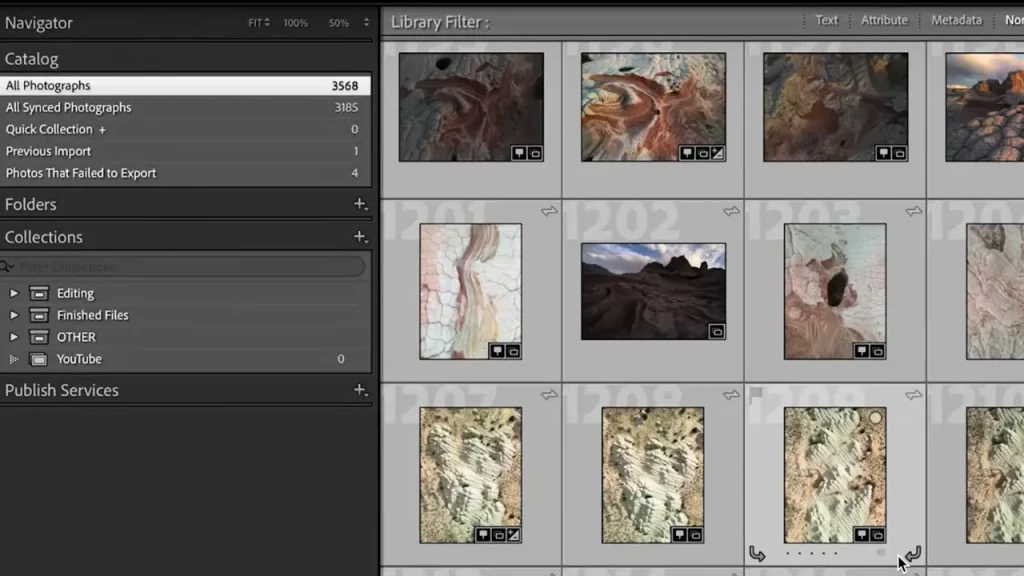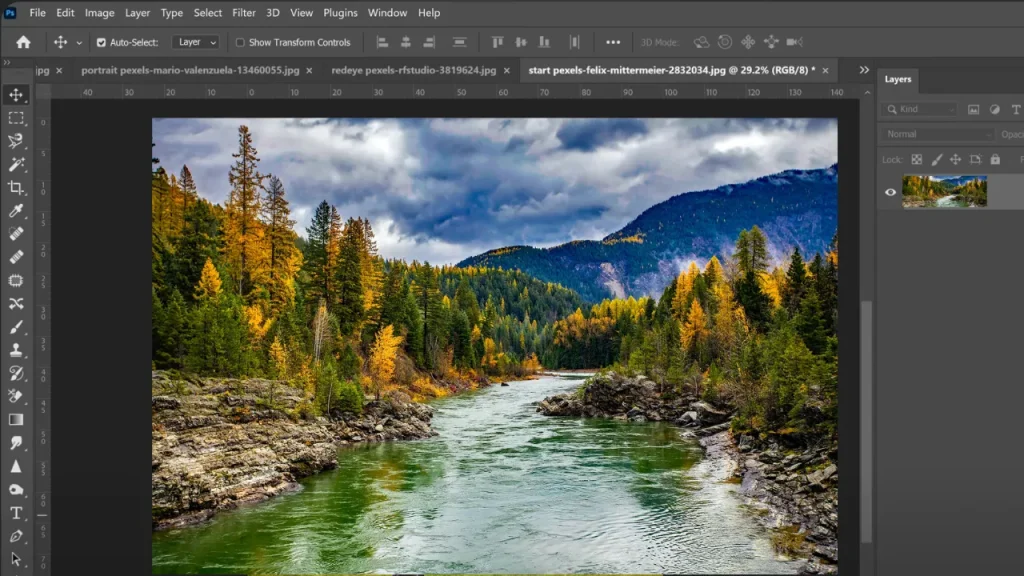
Are you unsure, about the difference between Lightroom and Photoshop? Some individuals may prefer Lightroom for organizing and editing photos while others prefer Photoshop for detailed photo editing. No worries, I am here to help you decide which software is best for your photo editing needs.
| Feature | Basic editing tools presets | Adobe Photoshop |
|---|---|---|
| Primary Focus | Photo management and basic editing | Advanced editing and creative manipulation |
| Photo Management | Excellent for organizing and tagging photos | Limited, requires Adobe Bridge |
| Editing Style | Non-destructive (original photo unchanged) | Destructive and non-destructive options |
| Ease of Use | User-friendly, quick learning curve | Complex, steeper learning curve |
| Batch Processing | Yes, very efficient | Limited |
| Layer Support | No | Yes |
| Advanced Tools | Basic editing tools, presets | Advanced tools, filters, layers, masking |
| Integration | Seamless with Photoshop | Works with Lightroom for comprehensive edits |
| Cost | Subscription as part of Adobe Photography Plan | Subscription as part of Adobe Photography Plan |
Overview
Adobe Lightroom:
- Photo Management: Lightroom app is good for organizing and managing your photos. Imagine you took a lot of pictures at a birthday party. Lightroom helps you sort them, tag them, and find your favorite photos easily.
- Basic Editing: It is also good for making simple changes to your photos. You can brighten a dark photo, fix colors, and make your pictures look more vibrant. Moreover, it doesn’t change the original photo, so you can always go back and check how it was before.
Adobe Photoshop:
- Advanced Editing: Photoshop enables users to make alterations to photos allowing for difficult tasks, such as removing individuals from backgrounds adding new elements and creating entirely fresh images using various photo sources.
- Layers and Effects: Photoshop uses layers, which are like sheets of clear paper stacked on top of your photo. You can edit each layer separately. This gives you a lot of control and lets you make very detailed changes.
Mobile Usage: Lightroom vs Photoshop

Lightroom on Mobile
- Photo Management: Lightroom’s mobile app offers excellent photo management features, similar to the desktop version. You can organize your photos, add keywords, and rate them.
- Editing Capabilities: The mobile application offers editing features such as exposure tuning, color enhancement and pre set options. Changes made on the device synchronize with the desktop application via Adobes cloud service.
- Ease of Use: The mobile app is easy to navigate and tailored for edits while, on the move. It is ideal, for individuals looking to enhance their photos after capturing them.
Photoshop on Mobile
- Editing Capabilities: Photoshop on mobile, known as Photoshop Express,. provides a limited range of tools in comparison, to the desktop application. It is best suited for performing edits like cropping images improving brightness levels and adding filters.
- Complex Features: Unlike the desktop version Photoshop Express does not offer functions like layers and intricate retouching tools.
- Connectivity: Although Photoshop Express can synchronize with the desktop version it is mainly utilized for making adjustments, than carrying out extensive editing tasks.
| Feature | Lightroom Mobile | Photoshop Express |
|---|---|---|
| Photo Management | Yes | No |
| Editing Tools | Advanced (similar to desktop) | Basic |
| Ease of Use | User-friendly | User-friendly |
| Sync with Desktop | Yes | Yes |
| Advanced Features | Most desktop features | Limited features |
Recommendations for Lightroom vs Photoshop
- Use Lightroom Mobile: If you need comprehensive photo management and advanced editing tools on the go. It’s perfect for photographers who want to maintain a consistent workflow between mobile and desktop.
- Use Photoshop Mobile: If you need quick fixes and basic edits. It’s ideal for casual users who want to enhance their photos before sharing them on social media.
Which App is better to use on a Mobile Device
For mobile photo editing, Lightroom offers a more robust and integrated experience, similar to its desktop version, making it a great choice for photographers who need to manage and edit photos on the go. Photoshop Express, while useful for basic edits, does not provide the same level of functionality as its desktop counterpart and is better suited for quick, simple adjustments.
Key Differences: Lightroom vs Photoshop
Photo Management and Organization
Lightroom’s Catalog and Keywording System
Lightroom is amazing when it comes to organizing your photos. It has a catalog system that keeps all your photos in one place. Think of it like a giant, super-organized photo album. You can add keywords to your photos, like “birthday,” “vacation,” or “sunset,” to help you find them easily later.
- Catalog: This is where Lightroom stores information about your photos, such as edits you’ve made and where the photos are located on your computer.
- Keywording: You can tag photos with specific words. For example, you can tag all your birthday photos with the keyword “birthday.” Later, if you want to find all your birthday photos, you just search for that keyword.

Importance of Organization for Professional Photographers
For professional photographers, organization is super important. They often deal with thousands of photos from different events like weddings, portraits, and commercial shoots. Being able to quickly find and edit the best photos is crucial.
- Efficiency: Well-organized photos save a lot of time. You don’t have to scroll through hundreds of images to find the one you need.
- Consistency: With organized photos, it’s easier to apply consistent edits and styles across similar photos, which is important for maintaining a professional look.
- Client Satisfaction: Being able to quickly find and deliver the best photos can make a big difference in keeping clients happy.
Photoshop’s Lack of Built-In Organization Tools and Reliance on Adobe Bridge
When analysing Lightroom vs Photoshop, Photoshop doesn’t have built-in tools for organizing photos. It’s primarily focused on editing and creating images. To manage photos, Photoshop users need to rely on another program called Adobe Bridge.
- Adobe Bridge: This is a separate application that helps organize and manage files. It works with Photoshop to provide features like browsing, rating, and tagging photos. However, it’s not as integrated or seamless as Lightroom’s system.
- Limitations: Because Photoshop doesn’t have built-in photo management, it can be a bit more cumbersome for photographers who need to organize large numbers of images. Using Adobe Bridge adds an extra step in the workflow, which can slow things down.
Editing Capabilities in Lightroom vs Photoshop
Raw File Processing
- Lightroom’s Integrated Raw File Engine: Lightroom has a built-in Raw file processor, which makes it easy to work with Raw images. You can import, edit, and organize Raw files seamlessly without needing to open another program.
- Photoshop’s Use of Adobe Camera Raw: Photoshop uses Adobe Camera Raw to process Raw files. This means you have to open your Raw files in a separate window before you can start editing in Photoshop. It’s an extra step that can slow down your workflow.
Non-Destructive vs. Destructive Editing
- Lightroom’s Non-Destructive Workflow: Lightroom saves all your edits separately from the original photo. This means you can always go back to the original image if you need to. It’s great for experimenting with different edits without worrying about losing the original.
- Photoshop’s Destructive Editing with Layer-Based Non-Destructive Options: Photoshop can be destructive, meaning that changes you make can permanently alter the original photo. However, you can use layers and Smart Objects to work non-destructively, but it requires more steps and knowledge to do so effectively.
Basic Editing Tools
- Lightroom’s Develop Module: Lightroom’s Develop module offers easy-to-use sliders for adjusting exposure, color correction, and applying presets. It’s great for making quick and simple edits to your photos.
- Photoshop’s Advanced Tools: Photoshop has more advanced tools like curves, levels, and filters. These tools give you more control over your edits but can be more complicated to use.
Advanced Editing and Creative Tools

Photoshop’s Strengths
- Layers and Masking: Photoshop’s layers let you stack different edits on top of each other and adjust them separately. Masking allows you to apply edits to specific parts of your image without affecting the whole picture.
- Compositing and Advanced Retouching: Photoshop is great for combining multiple images into one and for detailed retouching. You can create complex compositions and make precise edits.
- Content-Aware Fill, Healing Brush, and Cloning Tools: These tools let you remove unwanted objects from your photos and fill in the gaps seamlessly. They’re perfect for making your photos look clean and polished.
Lightroom’s Recent Advancements
- Improved Healing and Cloning Tools: Lightroom has made significant improvements in its healing and cloning tools, making it easier to remove small imperfections from your photos. It now has the option to remove objects with Ai object removal tool.
- Denoise AI and Masking Capabilities: Lightroom’s Denoise AI helps reduce noise in your photos, especially in low-light conditions. The masking tools have also been enhanced, allowing for more precise adjustments to specific parts of your image.
Batch Processing
Importance for Event and Wedding Photographers
Batch processing is a time saver for photographers who work with large numbers of photos, like those shooting weddings or events. It allows you to apply the same edits to multiple photos at once, saving a lot of time and ensuring consistency across your images.
Lightroom’s Efficiency in Batch Processing
Lightroom excels at batch processing. You can easily apply presets or make adjustments to many photos simultaneously. This is especially useful for photographers who need to deliver a large number of edited photos quickly.
Photoshop’s Limited Batch Processing Capabilities
Photoshop doesn’t have advanced batch processing features. You can create actions to apply the same edits to multiple photos, but it’s not as straightforward or efficient as Lightroom’s batch processing.
Workflow Integration
Seamless Integration Between Lightroom and Photoshop
Lightroom and Photoshop work seamlessly together. You can start editing your photos in Lightroom and then move them to Photoshop for more advanced edits. Once you’re done in Photoshop, you can save your changes and continue working in Lightroom.
Example Workflow
- Start in Lightroom: Import and organize your photos, and make basic edits like exposure and color correction.
- Switch to Photoshop: For detailed retouching, compositing, or adding special effects, send the photo to Photoshop.
- Return to Lightroom: Save your Photoshop edits and continue managing your photos in Lightroom.
User Experience and Learning Curve
Ease of Use in Lightroom vs Photoshop
- Lightroom’s User-Friendly Interface and Faster Learning Curve: Lightroom is designed to be easy to use, even for beginners. Its interface is intuitive, and the learning curve is gentle. You can quickly learn how to organize and edit your photos.
- Photoshop’s Complex Interface and Steeper Learning Curve: Photoshop is more complex and has a steeper learning curve. It offers powerful tools, but it can take time to learn how to use them effectively.
Resources for Learning
Both Lightroom and Photoshop have plenty of tutorials, courses, and community support available. You can find free and paid resources to help you learn how to use each program effectively.
Cost and Subscription Plans
Overview of Adobe’s Photography Plan and Individual Subscriptions
Adobe offers a Photography Plan that includes both Lightroom and Photoshop, as well as other benefits like cloud storage. You can also subscribe to each program individually, depending on your needs.
Cost Comparison and Value for Money
- Photography Plan (1TB): $19.99 per month.
- Lightroom Plan (1TB): $9.99 per month.
- Photoshop: $20.99 per month (with discounts available for the first three months).
The Photography Plan offers the best value if you need both Lightroom and Photoshop, along with cloud storage.
Alternatives to Adobe’s Subscription Model
If you prefer not to use a subscription model, there are alternative photo editing programs available, such as Skylum Luminar, Darkroom, Snapseed which offers powerful editing tools without a subscription fee.
Use Cases and Recommendations
When to Use Lightroom
- For photographers focused on managing large photo libraries.
- For basic to intermediate editing and quick workflow.
When to Use Photoshop
- For advanced retouching, graphic design, and creative projects.
- For users needing extensive control over every aspect of their images.
Decision: Lightroom vs Photoshop
| Feature | Lightroom | Photoshop |
|---|---|---|
| Photo Management | Winner | – |
| Batch Processing | Winner | – |
| Raw File Processing | Winner | – |
| Non-Destructive Editing | Winner | – |
| Destructive Editing | – | Winner |
| Basic Editing Tools | – | Winner |
| Advanced Tools | – | Winner |
| Layers Support | – | Winner |
| Healing and Cloning Tools | – | Winner |
| Denoise and Masking | Winner | – |
| Ease of Use | Winner | – |
| Learning Curve | Winner | – |
| Mobile Photo Management | Winner | – |
| Mobile Editing Tools | Winner | – |
| Mobile Sync with Desktop | Winner | – |
| Mobile Advanced Features | – | Winner |
FAQs
Is Lightroom better than Photoshop?
It depends on what you need. Lightroom is better for organizing and making basic edits to a large number of photos quickly. Photoshop is better for detailed, advanced editing and creative projects.
Do professional photographers use Lightroom or Photoshop?
Professional photographers often use both. Lightroom is used for organizing and basic edits, while Photoshop is used for advanced retouching and creative manipulations.
Should I do Photoshop first or Lightroom?
Most photographers start with Lightroom to organize and make basic edits, then move to Photoshop for detailed retouching and advanced edits.
Is Lightroom free if you have Photoshop?
No, Lightroom and Photoshop are part of Adobe’s Photography Plan, which includes both programs. They are not free individually if you subscribe to one.
What is the disadvantage of Lightroom?
Lightroom lacks advanced editing features like layers and detailed retouching tools that Photoshop offers. It’s mainly for basic edits and photo organization.
Which is better than Lightroom?
For advanced editing and creative work, Photoshop is better than Lightroom. However, for photo management and quick edits, Lightroom excels.
Which Adobe is best for photo editing?
Both Lightroom and Photoshop are excellent for photo editing. Lightroom is best for organizing and quick edits, while Photoshop is best for detailed and creative edits.
Is Lightroom free on PC?
No, Adobe Lightroom is not free on PC. It requires a subscription to Adobe’s Photography Plan or a standalone Lightroom subscription.
Is Adobe Lightroom good for beginners?
Yes, Adobe Lightroom is user-friendly and has a gentle learning curve, making it a great choice for beginners who want to manage and edit their photos.





